The complex geo-politics of the world has been reshaping nearly every two decades. Russia and China are two giant neighbours that occupy the largest land mass of Asia. Traditionally they have been two antagonist societies but often chose marriage of convenience. Their relations in the post World war II era have been vacillating between extremes. Currently they are close, unequal, unreal and complex.

Vacillating Historic Relations
Prior to the 17th century China and Russia were on opposite ends of Siberia, which was populated by independent nomads. By about 1640 Russian settlers had traversed most of Siberia and founded settlements in the Amur River basin. From 1652 to 1689, China’s armies drove the Russian settlers out, but after 1689, China and Russia made peace and established trade agreements.
By the mid-19th century, China’s economy and military lagged far behind the colonial powers. It signed unequal treaties with Western countries and Russia, through which Russia annexed the Amur basin and Vladivostok. The Russian Empire and Western powers exacted many other concessions from China, including control over China’s tariffs and extraterritorial agreements. Meanwhile, Russian culture and society, especially the elite, were westernized. The ruler of Russia officially was no longer called tsar but emperor, an import from Western Europe. Issues between them were mainly the Russian-Chinese border.
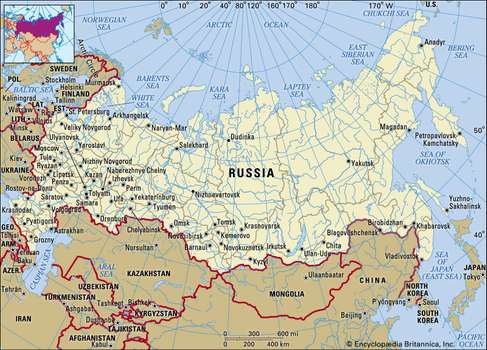
In 1911, public anger against Chinese emperor led to a revolution, which marked the beginning of the Republic of China. However, China’s new regime, known as the Beiyang government, was forced to sign more unequal treaties with Western countries and with Russia. In late 1917, Russia had a civil war. China’s Beiyang government sided with forces opposing the revolution. In 1922, the Soviet Union was formed. In 1923, the Soviets provided aid and support to the Kuomintang, a Chinese faction that had been opposed to the Beiyang government. In alliance with the small Chinese Communist Party (CCP), the Kuomintang seized power in 1928, and both countries established diplomatic ties. Sino-Soviet relations remained fractious, and both countries fought two wars in the next ten years. Nevertheless, the Soviets, under Joseph Stalin, helped Chiang Kai-shek’s Kuomintang government against Imperial Japan. Stalin told the Communists’ leader, Mao Zedong, to co-operate with China’s Kuomintang regime, but Mao attacked the Kuomintang anyway. The communists failed to overthrow Chiang’s government.
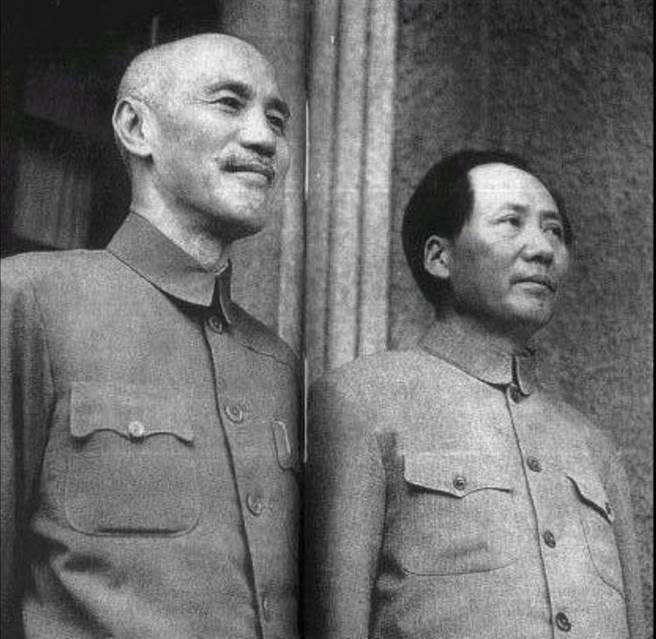
In 1937, the Kuomintang and the communists formed a new alliance to oppose the Japanese invasion of China, but they resumed fighting each other in 1942. After Japan was defeated in 1945, both Chinese factions signed a truce, but soon the Chinese Civil War erupted again between them.
Mao Unhappy About Soft Soviet Communism
In 1949, with Soviet support, the communists won the Chinese Civil War and established the People’s Republic of China, which made an alliance with the Soviets. Mao became the first leader of Communist China. The supreme political authority in the two countries became centered in two communist parties, which both espoused revolutionary Marxist-Leninist ideology. Soviet design, equipment, and skilled labour were sent out to help the Industrialization and the modernization of the PRC. Ideological tension between the two countries emerged after Stalin’s death in 1953. Nikita Khrushchev denounced Stalin’s crimes in 1956, and both regimes started to criticise each other. Internally, it encouraged Mao to plunge China into the Cultural Revolution to expunge traces of Soviet ways of thinking. The quarrel began in 1958, after several years of close relations. Mao was always loyal to Stalin, and Nikita Khrushchev felt insulted.
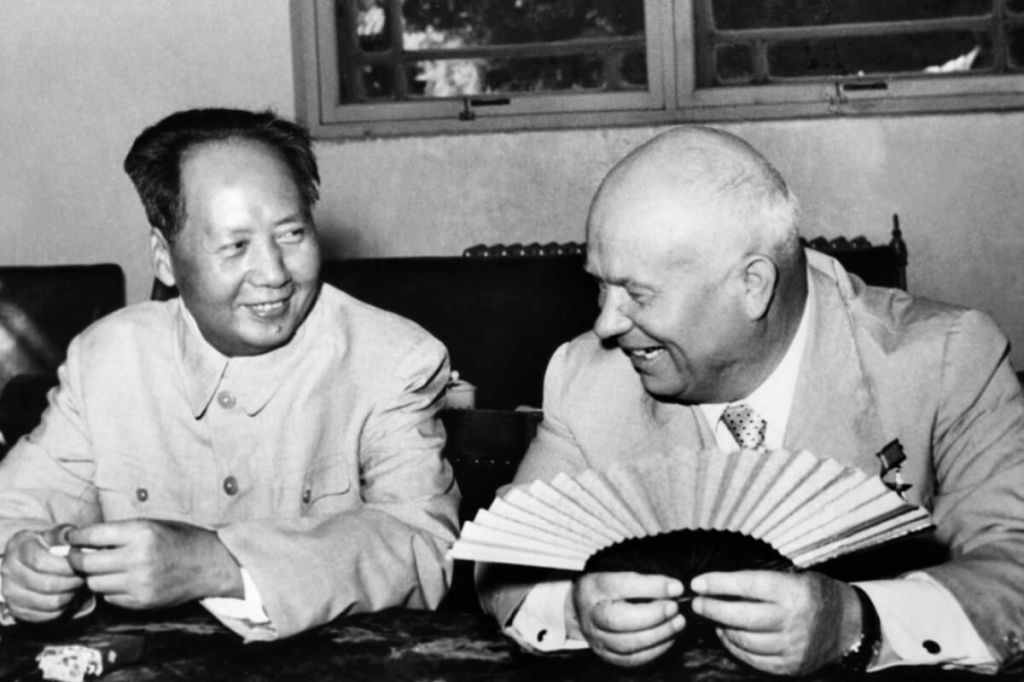
Mao Appreciates Strong Warsaw Pact action
However, when the Warsaw Pact crushed the dissident movements in Eastern Europe in 1956, Beijing was pleased that Moscow had apparently realized the dangers of de-Stalinization and would no longer tolerate independence or encourage revisionism. Beijing was also pleased that the success of the Soviet Union in the space race (the original Sputniks) demonstrated that the international communist movement had caught up in high technology with the West. Mao argued that as far as all-out nuclear war was concerned, the human race would not be destroyed, but a brave new communist world would arise from the ashes of imperialism. That attitude troubled Moscow, which had a more realistic view of the utter disasters that would accompany a nuclear war.
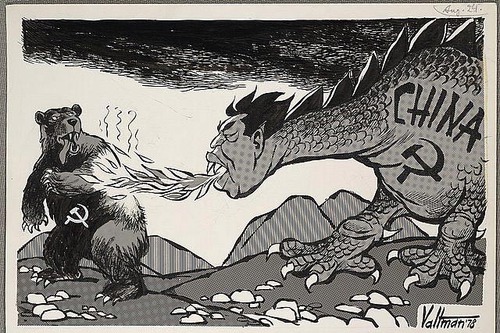
Taiwan, India and China’s Great Leap Accelerates Split
Three major issues suddenly became critical in dividing the two nations: Taiwan, India, and China’s Great Leap Forward. Although Moscow supported Beijing’s position of Taiwan entirely belonging to China, it demanded to be forewarned of any invasion or serious threat that would bring an American intervention. Beijing refused, and the Chinese bombardment of the island of Quemoy in August 1958 escalated the tensions. Moscow was cultivating India, both as a major purchaser of munitions and as a strategically-critical ally. However China escalated its threats to the northern fringes of India, especially from Tibet, and was building a militarily significant road system that would reach disputed areas along the border. Moscow clearly favored India, and Beijing felt betrayed as a result. By far, the major ideological issue was the Great Leap Forward, which represented the Chinese rejection of the Soviet form of economic development. The Soviets were deeply resentful, especially since they had spent heavily to supply China with cutting-edge technology, even including some nuclear tech. The Soviets withdrew their vital technicians and economic and military aid. Khrushchev was increasingly crude and intemperate in ridiculing China and Mao to both communist and noncommunist audiences. China responded through its official propaganda network of rejecting Moscow’s claim to Lenin’s heritage. Beijing insisted that it was the true inheritor of the great Leninist tradition.

Camaraderie to the Sino-Soviet Split
At first, the criticism was indirect and muted, but in 1961, Mao accused the Soviet leadership of revisionism, and the alliance openly ended. The split was ideological and forced communist parties around the world to take sides. Many of them split, and the pro-Soviet communists were battling the pro-Chinese communists for local control of global communists. The split destroyed the socialist camp’s unity, and affected the world balance of power.
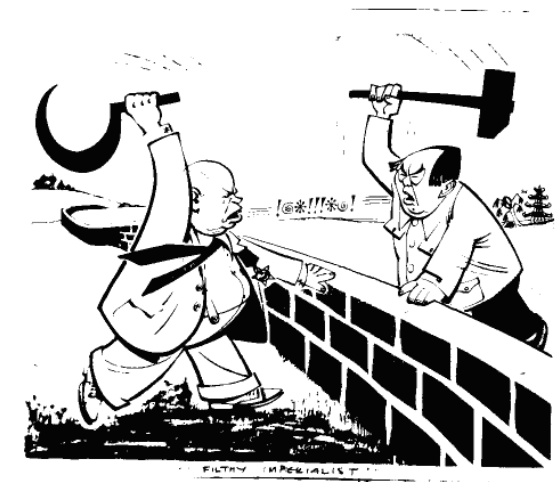
Khrushchev and Mao Openly Attack Each Other
At a major meeting of communist parties, Khrushchev personally attacked Mao as an ultra-leftist and a left revisionist and compared him to Stalin for dangerous egotism. The conflict was now out of control and was increasingly fought out in 81 communist parties around the world. The final split came in July 1963, after 50,000 refugees escaped from Xinjiang, in Western China, to Soviet territory to escape persecution. China ridiculed the Soviet incompetence in the Cuban Missile Crisis of 1962 as adventurism and capitulationism that ended up in defeat. Moscow was increasingly prioritizing friendly relationships and test ban treaties with the United States and the United Kingdom. Increasingly, China began to consider the Soviet Union, which it viewed as social imperialist, as the greatest threat it faced, more so than even the leading capitalist power, the United States. In turn, overtures were made between the PRC and the US, such as in the Ping Pong Diplomacy and the 1972 Nixon visit to China.

Highly Militarised Sino Soviet Border Till 1988
From 1965 to 1988, the Sino-Soviet border became highly militarized and fortified. That included a large concentration of tactical nuclear-armed missile sites on both sides of the zone. Until 1991, foreigners, consulates and nonresidents had not been permitted in Vladivostok since 1948 or in Yanbian or the border areas of Heilongjiang Province since 1965. Political, social, and economic conditions deteriorated further, as the Cultural Revolution disrupted Chinese life and institutions from 1966 to 1972. Periods of extreme tension in 1968 to 1970 along the eastern Sino-Soviet border resulted in border skirmishes on the Ussuri River in 1969 and again from 1979 to 1980, when Vietnam invaded Cambodia, and China retaliated with a border war with Vietnam. The skirmishes led to the intensification of border fortifications and the mobilization of the civilian populations on both sides.
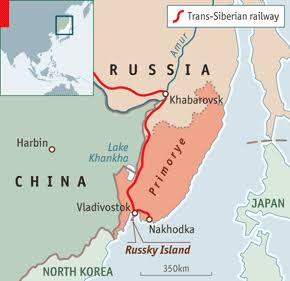
Chinese Claims on areas near Vladivostok. Image Source: Twitter IDU @defencealerts
Philosophical Difference
Since Khrushchev had abandoned many Soviet reforms, he was being criticized by Mao. Leonid Brezhnev came into power in 1964, however, China’s anti-Soviet rhetoric intensified under the influence of Mao’s closest supporters, the Gang of Four. Mao died in 1976, and the Gang of Four lost power in 1978. Deng Xiaoping became the new leader of China. The philosophical difference between both countries reduced since China’s new leadership abandoned anti-revisionism, but China’s internal reforms did not bring an immediate end to conflict with the Soviet Union.
Vietnam & Afghanistan – Differences Grow
In 1979, China invaded Vietnam, which was a Soviet ally. The Chinese invasion was in response to Vietnam’s invasion and subsequent occupation of Cambodia, which overthrew the Chinese-backed Khmer Rouge from power. China also sent aid to the mujahedin against the Soviet invasion of Afghanistan. In 1982, Brezhnev made a speech offering reconciliation with China, and Deng agreed to restore diplomatic relations. In 1985, Mikhail Gorbachev became President of the Soviet Union. Even though he openly criticized the post-Maoist CCP for allowing PRC millionaires to have lost the socialist path, he reduced the Soviet garrisons at the Sino-Soviet border and in Mongolia, resumed trade, and dropped the border issue that had caused open war 16 years earlier. In 1989, he withdrew Soviet support from the communist government of Afghanistan. Rapprochement accelerated after the Soviet Union fell and was replaced by the Russian Federation in 1991. Russia itself turned to privatization.
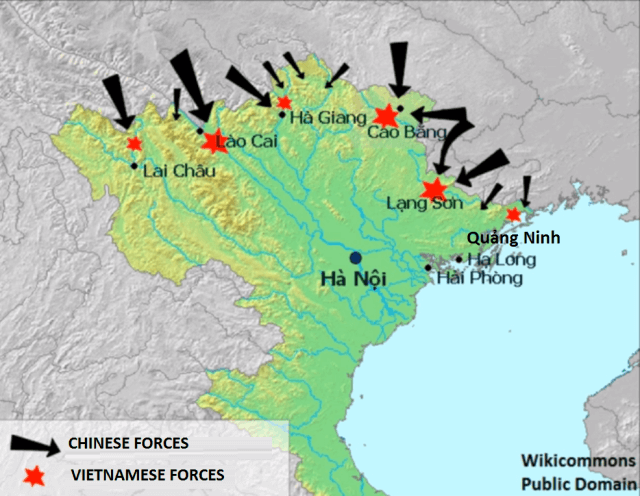
Complex U.S. China Initial Relations and Rapprochement
The United States did not formally recognize the People’s Republic of China (PRC) for 30 years after its founding. Instead, the US maintained diplomatic relations with the Republic of China government on Taiwan, recognizing it as the sole legitimate government of China. US fought the 1950 Korean war against China and Soviet Union. Two years war ended in a stalemate, on July 27, 1953, dividing Korea. This worsened the US-China relations for times to come. China provided resources and training to North Vietnam during the Vietnam war. By now China had become nuclear armed and that put limits on the USA to take on China directly. Between 1949 and 1971, US-China relations were uniformly hostile, with frequent propaganda attacks in both directions. The Sino-Indian border war in November 1962 and watching Beijing’s response to the Cuban Missile Crisis, USA concluded that China was more militant and more dangerous than the Soviet Union. Diplomatic recognition of China remained out of the question. The USA placed an embargo on trading with the PRC. AS PRC went nuclear in 1964, USA considered preemptive attacks to halt its nuclear program. Despite non-recognition, the USA and China held 136 meetings at the ambassadorial level between 1958–1970. Once USA decided to wind down the Vietnam War in 1968, it gave China an impression that the US had no interest of expanding in Asia anymore and USSR remained a bigger threat as it intervened in Czechoslovakia.

After the Sino-Soviet border conflict of 1969, China felt diplomatically isolated and chose to move closer to USA as a counter balance. In 1969, the United States initiated measures to relax trade restrictions and other impediments to bilateral contact, to which China responded. President Nixon also believed it was in the American national interest to forge a relationship with China, even though there were enormous differences between the two countries. Nixon visited China in February 1972, and the two sides issued the Shanghai Communiqué, pledging to work toward the full normalization of diplomatic relations. The US acknowledged that there is only one China and that Taiwan is part of China. The statement enabled the US and PRC to temporarily set aside the issue of Taiwan and open trade and communication. On several issues, such as the ongoing conflicts in Korea, Vietnam, and Israel, the US and China were unable to reach a common understanding. China announced on December 15, 1978, that the two governments would establish diplomatic relations on January 1, 1979. Beijing acknowledged that the American people would continue to carry on commercial, cultural, and other unofficial contacts with the people of Taiwan.
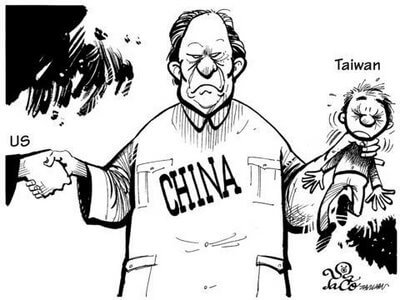
Vice Premier Deng Xiaoping’s January 1979 visit to Washington initiated a series of important, high-level exchanges which continued until the spring of 1989. This resulted in many bilateral agreements, especially in the fields of scientific, technological, and cultural interchange, as well as trade relations. Since early 1979, the United States and the PRC initiated hundreds of joint research projects and cooperative programs. US-China military cooperation began in 1979; American arms sales to China were initiated, and in 1981 it was revealed that a joint US-China listening post had been operated in Xinjiang, near the Soviet border. Chinese demands for advanced technology from the US were not always met, in part due to opposition from Congressmen who either distrusted technology transfer to a communist nation. The US State Department changed its classification of China to “a friendly, developing nation”, thereby increasing the amount of technology and armaments that could be sold.
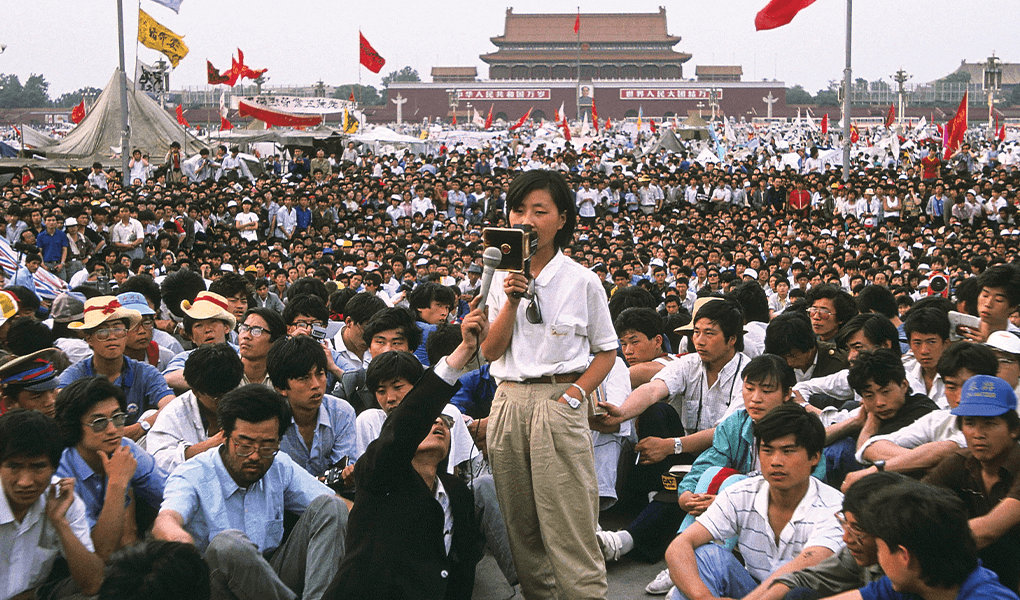
Deterioration of US-China Relations
Reagan’s first two years in office saw some deterioration in US-China relations due to the president’s vociferous anti-communism, as well as the inability of the two nations to come to a common understanding over the Israel–Palestine conflict, or the Falklands War. In 1982, Deng Xiaoping, called the US and Soviet Union as imperialists. Difference increased after the suppression of the Tiananmen protests. The US and other governments enacted a number of measures against China’s violation of human rights. Subject to certain exceptions, no licenses may be issued for the export of any defense article on the US Munitions list. Import of defense articles from the PRC was banned. This was never restored till date. The Taiwan issue remained a major source of contention and has intensified in recent years. Washington continued to support Taiwan, including with arms. China was also upset with Obama’s new Asia-Pacific defence strategy, which was widely viewed as aiming to isolate China in the East Asian region. President Xi has been dismissive of American complaints about cyber security. China’s claims in the South China Sea and rapid island building brought to open the Chinese expansionist plans, as American friends in the region were looking for leads from Washington.
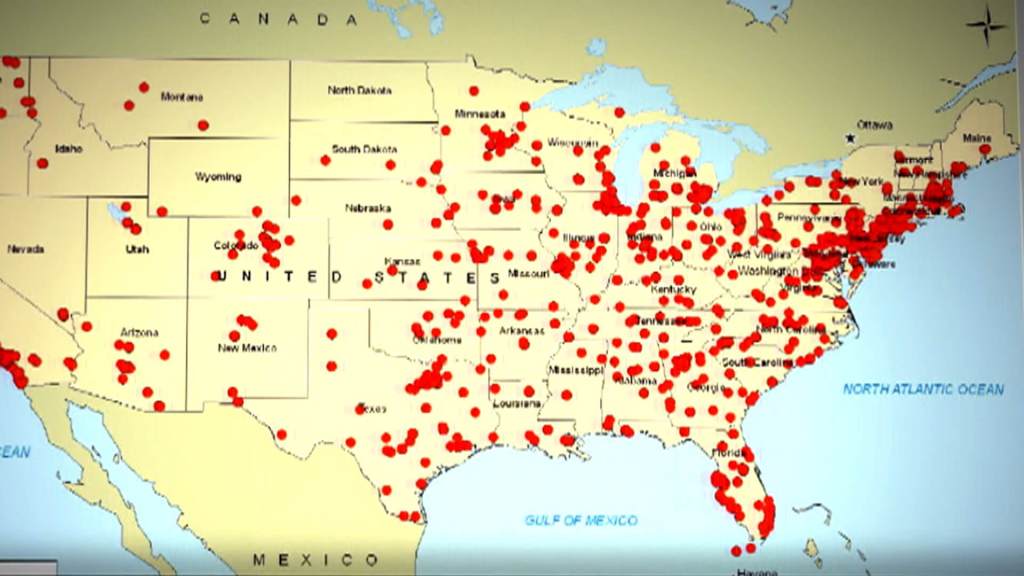
President Trump has been more aggressive on China “I fully understand the ‘one China’ policy, but I don’t know why we have to be bound by a ‘one China’ policy unless we make a deal with China having to do with other things, including trade”, he said. The US’s military build-up in Asia, and its push to arm South Korea with the THAAD missile-defense system, close military cooperation with India and support to QUAD has complicated the relations further. Speaking about China’s claims to sovereignty over the Spratly Islands in the South China Sea, White House spokesman Sean Spicer said, “It’s a question of if those islands are in fact in international waters and not part of China proper, then yeah, we’re going to make sure that we defend international territories from being taken over by one country.”
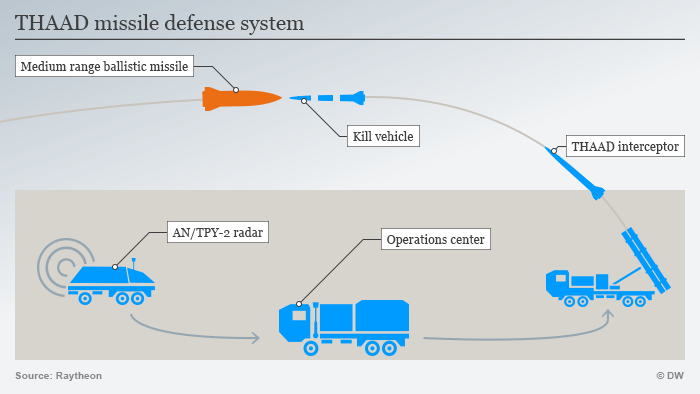
China enforced punitive tariffs on 128 categories of American goods on April 1, 2018 in retaliation for the Trump Administration’s national-security levies on steel and aluminum imports the previous month. The Chinese Government’s response is measured, affecting $3 billion in annual trade or about 2% of U.S. goods exports to China. By late September 2018, the Trump Administration had placed tariffs (25% tax increase) on $250 billion worth of Chinese goods, in an attempt to offset the trade imbalance between the two countries.

In what put additional strain on US-China relations, Huawei’s Chief financial officer Meng Wanzhou, daughter of Huawei’s founder Ren Zhengfei, was arrested in Canada on December 1, 2018 at the behest of U.S. authorities. According to political analyst, Andrew Leung, “China is perceived as the antagonist and rival of the United-States,” and that China’s rise is seen as a “threat to the world order underpinned by American dominance or American values.”
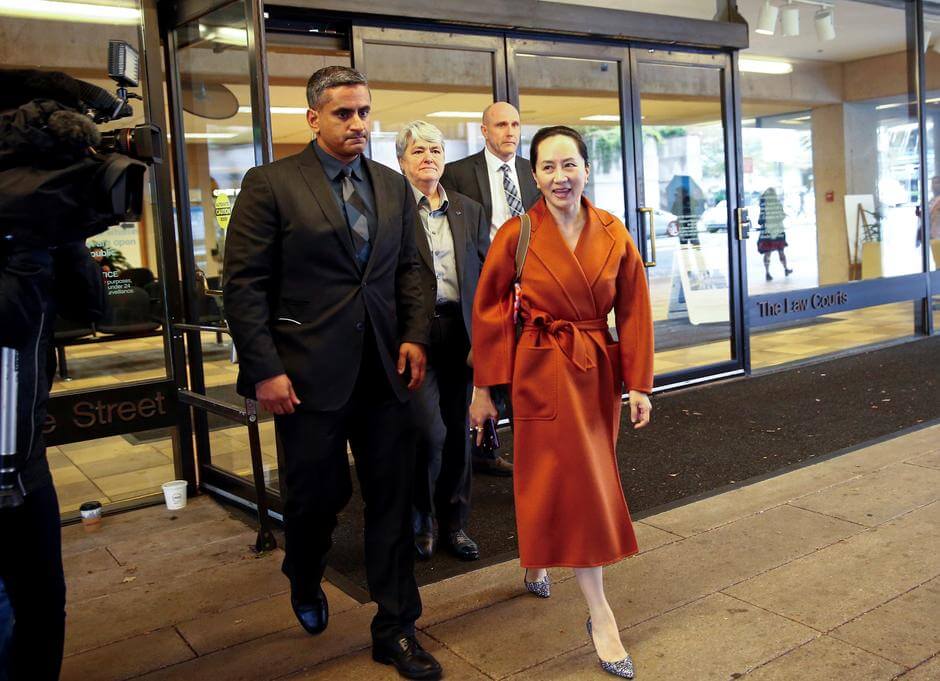
By September 2019, due to ongoing trade disputes between the United-States and China, China dropped from first-place to third, behind Mexico and Canada, as America’s foremost trading partner. Current trends portend steadily worsening relations over the long term, with increasingly adverse consequences for all actors involved. In 2019, a report of U.S.-China Economic and Security Review Commission suggested that everyone should stop calling the Chinese leader Xi Jinping by his title of “President,” under Xi’s one-party leadership and instead use the term General Secretary of the Communist Party of China.

On 18 February 2020, the US government announced five Chinese media firms would be designated “foreign missions,” requiring them to be legally registered with the US government as a foreign government entity. Washington slashed the number of journalists allowed to work at U.S. offices of major Chinese media outlets to 100 from 160 due to Beijing’s “long-standing intimidation and harassment of journalists.” By May 2020 relations had deteriorated as both sides were accusing the other of guilt for the worldwide coronavirus epidemic.

Beijing, meanwhile, has stepped up military activities in the contested South China Sea, and launched denunciations of American Secretary of State Mike Pompeo, and publicly speculating that the American military deliberately unleashed the virus in China. In the growing aspersion, on 15 May 2020, the US blocked shipments of semi-conductors to Huawei, while China, for its part, has threatened to place Apple, Boeing, and other US firms on “unreliable entities” lists, and has blamed the US government of using state power under the excuse of national security, and of abusing export control measures to continuously oppress and contain specific enterprises of other countries. American polls show the public has increasingly negative views of China. On June 17, 2020, President Trump signed the Uyghur Human Rights Policy Act, which authorizes the imposition of U.S. sanctions against Chinese government officials responsible for detention camps holding more than one million members of the country’s Uyghur Muslim minority.
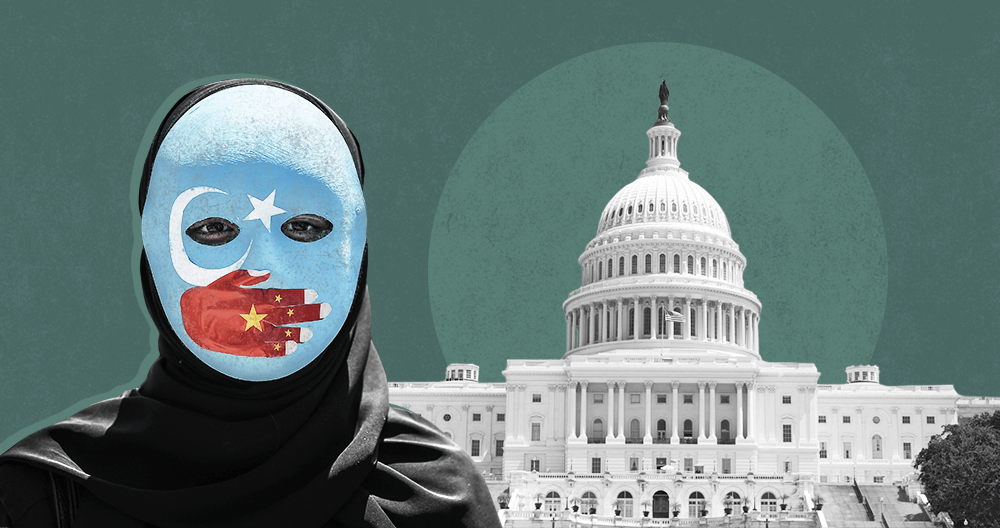
In July 2020, FBI Director Christopher Wray called China the “greatest long-term threat” to the United States. He said that “the FBI is now opening a new China-related counterintelligence case every 10 hours. Of the nearly 5,000 active counterintelligence cases currently under way across the country, almost half are related to China.” In July 2020, the Trump administration ordered the closure of the Chinese consulate in Houston. On July 23, 2020, United States Secretary of State Mike Pompeo announced the end of what he called “blind engagement” with the Chinese government. He also criticized Chinese Communist Party general secretary Xi Jinping as “a true believer in a bankrupt totalitarian ideology.” In August 2020, Washington imposed sanctions on 11 Hong Kong and Chinese officials over what it said was their role in curtailing political freedoms in Hong Kong.

Unregulated Russia Post Soviet Dissolution
Unlike in the PRC, Russia went through a very unregulated form of privatization during the presidency of Boris Yeltsin, which resulted in asset grabs by Russians in a highly unregulated fashion and in deep socio-economic inequalities in Russia and the collapse of the economy as well as various Russian institutions. Thus, after the Cold War, the PRC emerged in a far more favourable and stable financial position. The PRC saw the fastest rate of economic growth of any large economy, several percentage points higher than Russia. The Russian economy in the early 2000s was largely driven by demand for export of natural resources to Europe and Asia. Russia had to become a major supplier of energy to China’s growing market, and with the ESPO (Eastern Siberia–Pacific Ocean) oil pipeline, Russia will continue to diversify energy exports away from Europe and towards Asia.
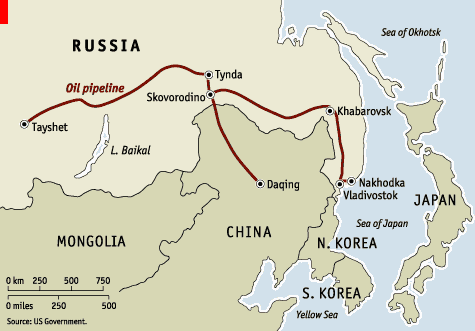
Post Dissolution Russia-China Relations Close Up
Diplomatic relations between China and Russia dramatically improved after the dissolution of the Soviet Union and the establishment of the Russian Federation in 1991. The two countries share a long land border which was demarcated in 1991. With the collapse of the Soviet Union, the US – China alliance ended, and a China – Russia rapprochement began. In 1992, the two countries declared that they were pursuing a “constructive partnership”. In 1996, they progressed toward a “strategic partnership”. In December 1998, at the end of Prime Minister Li Peng’s visit to Moscow, Russia and China issued a joint communiqué pledging to build an ‘equal and reliable partnership’. This reinforced the Sino-Russian view that the United States was their main competitor in the global political scene.
Treaty of Good-Neighborliness and Friendly Cooperation
In 2001, they signed a of treaty of good-neighborliness and friendly cooperation, a twenty-year strategic, economic, and – controversially and arguably – an implicit military treaty. A month before the treaty was signed, the two countries joined with junior partners Kazakhstan, Kyrgyzstan, Tajikistan, and Uzbekistan in the Shanghai Cooperation Organisation (SCO). The organization is expected to counter the growing influence of the United States military outreach program in Central Asia.
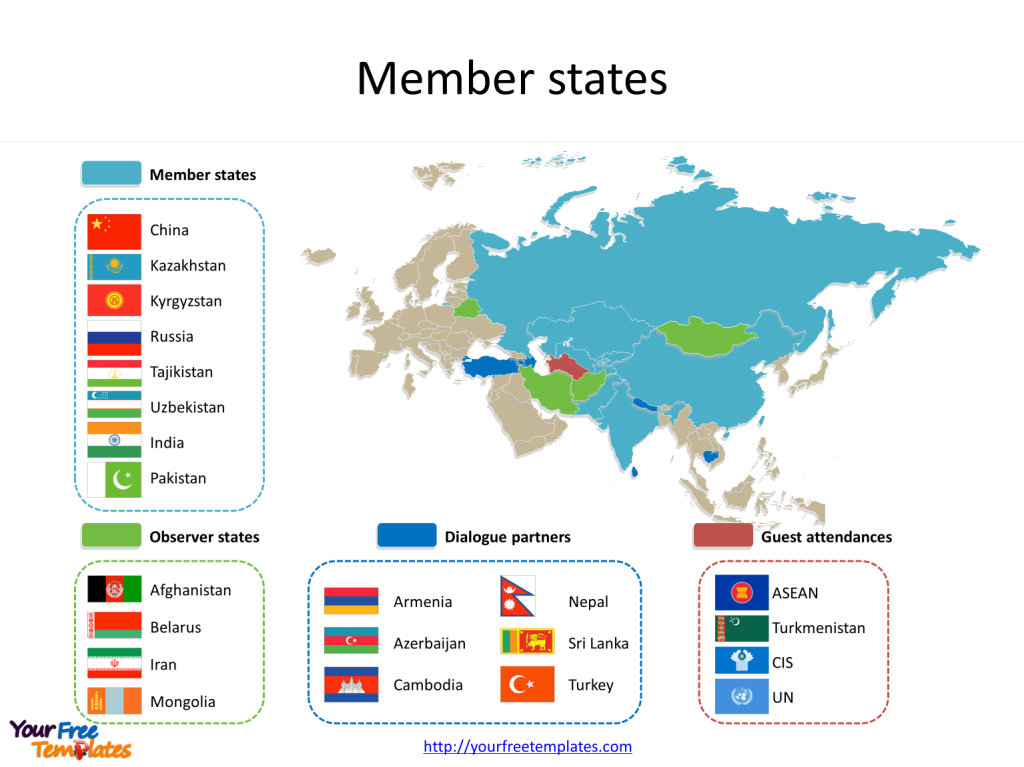
Delicate Relationship of Convenience
On the eve of a 2013 state visit to Moscow by Chinese President Xi Jinping, Russian President Vladimir Putin remarked that the two nations were forging a special relationship. The two countries have enjoyed close relations militarily, economically, and politically, while supporting each other on various global issues. The PRC is currently a key purchaser and licensee of Russian military equipment, some of which has been instrumental in the modernization of the People’s Liberation Army. It is also a main beneficiary of the Russian Eastern Siberia – Pacific Ocean oil pipeline. However, Russian commentators have increasingly raised concerns about China’s ambitions and influence in Central Asia, an area traditionally within Russian influence. Sino-Russian relations are currently close and cordial. Both countries maintain a strong geopolitical and regional alliance and significant levels of trade.
Complex Defence and Economic Relations
After the dissolution of the Soviet Union, the Russian currency collapsed and had to be devalued manifold. China used this opportunity to flood the Russian market with cheap Chinese goods. these included cheap imitations of the once globally appreciated Russian crystal and porcelain. Cash strapped Russia was desperate for markets for its weapons platforms and abundant natural resources. It found in the fast growing China an opportunity to sell military hardware and energy resources such as crude oil. On the other hand, despite Russian protests, China has reveres engineered most Russian weapons platforms and is fast becoming independent and their defence imports are reducing. Russia is also worried that China has already started taking over erstwhile Russian defence markets in Africa, Asia and Latin America.

Collapse of Warsaw Pact
The Warsaw Treaty Organization (WTO), commonly known as the Warsaw Pact (WP), was a collective defense treaty signed in Warsaw, Poland between the Soviet Union and seven other Eastern Bloc socialist republics of Central and Eastern Europe in May 1955, during the Cold War. It was created in reaction to the integration of West Germany into NATO in 1955. It was thus a counterweight to NATO. The Pact began to loosen with the spread of the Revolutions of 1989 through the Eastern Bloc, beginning with the Solidarity movement in Poland. East Germany withdrew from the Pact following the reunification of Germany in 1990. On 25 February 1991, the Pact was declared at an end by the defense and foreign ministers of the six remaining member states. The USSR itself was dissolved in December 1991, although most of the former Soviet republics formed the Collective Security Treaty Organization shortly thereafter. In the next 20 years, the seven Warsaw Pact countries outside the original USSR each joined NATO.
America Pushes Russia into a Corner
A large expanse of Russian land-mass lies in Asia. The Russia national emblem has an eagle with two heads facing in opposite directions. The saying among Russian people say that one head is looking towards Europe and the other towards Asia. But traditionally the Russian people and rulers have preferred to be known as a European nation. The power and prestige loss after the dissolution of Soviet Union had demoralized the Russian people. In the soviet times they were enamored with anything Western. They now hoped that they will now become like a Western country. China realised this insecurity and stepped in with treaties of friendship and increased economic and defence relationship. On the other hand, the Americans snubbed Russia and tried to move closer to Russian borders by taking more erstwhile Warsaw pact countries into NATO and EU fold. This pushed Russia, to its own detriment, into the Chinese arms.
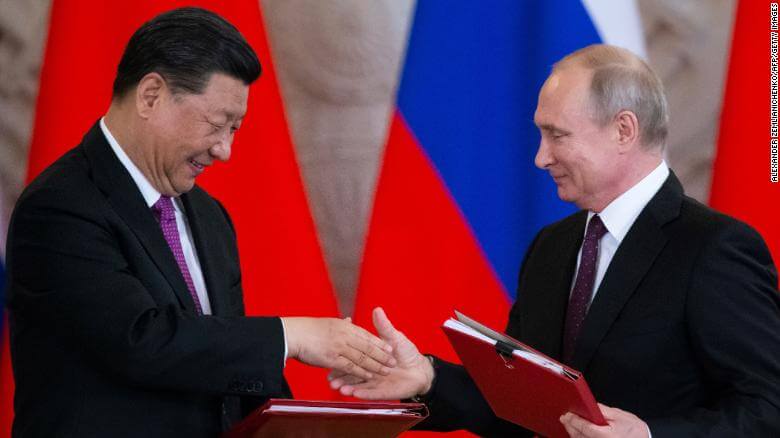
Liam Carson, emerging Europe economist at Capital Economics, said in 2019, “Policymakers in both countries have actively tried to strengthen trade ties in recent years. And it’s no coincidence that this surge in Russia-China trade has come at the same time that the US has tightened sanctions on Russia and concerns about the US-China trade war have intensified”.
Russia China Differences with USA and Between Them
By 2019, both nations had serious grievances with the United States. For China the issues were control of the South China Sea, trade policies, and piracy of American technology. For Russia, the main issue was severe Economic penalties imposed by the US and Europe to punish its seizure of Crimea from Ukraine. China and Russia differ on some policies. China does not recognize Russia’s annexation of Crimea, and Russia does not support China’s claims in the South China Sea. Nevertheless, China and Russia pulled together on the best terms since the late 1950s. There was no formal alliance, but an informal agreement to coordinate diplomatic and economic moves, and build up an alliance against the United States.
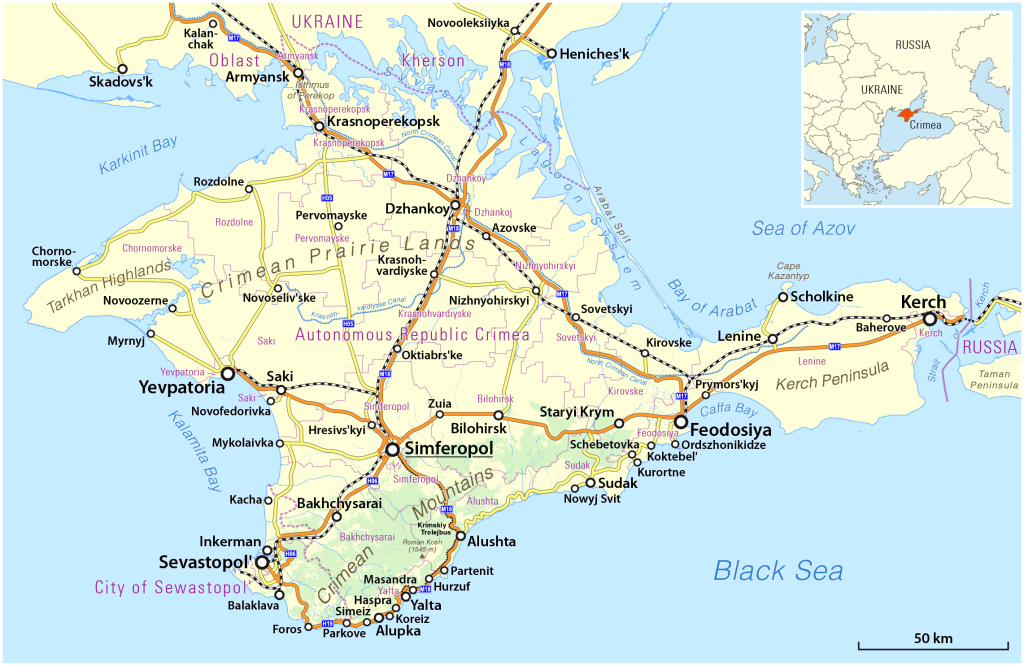
Ukrainian-born journalist Yaroslav Trofimov, the chief foreign-affairs correspondent of The Wall Street Journal, argues in 2019, that though there is no overt ideological alignment between Russia and China today, the two governments share a hostility to dissent, deep suspicion of Western interference and a strong desire to impose tighter controls over their own societies. China was inspired by Russia’s legislation cracking down on nongovernmental organizations, while Russian officials have expressed admiration for China’s comprehensive internet censorship and “social credit” plan to rank citizens based on their loyalty and behavior.
China-Russia Border Issues
On September 3, 1994, a demarcation agreement was signed fixing the boundary along a disputed 55-km stretch of the western Sino-Russian border, with Russia agreeing s to transfer some islets to China. The official transfer ceremony was held on-site on October 14, 2008. The Russian Far East, including Vladivostok was territory that China claims, once belonged to the Qing dynasty of China and was ceded to the Russian Empire in the 1858 Treaty of Aigun and the 1860 Treaty of Peking at the culmination of the Second Opium War. In China, these are widely regarded as unequal treaties. In July 2020, in response to Russian celebrations on Chinese social media website Weibo for 160 years of Vladivostok, the official Chinese broadcaster CGTN said “This tweet of Russian embassy to China isn’t so welcome on Weibo. The history of Vladivostok is far from 1860 when Russia built a military harbour. The city was Hai Shen Wai as Chinese land – before Russia annexed it”. The statement was echoed by several Chinese diplomats and social media users.

Russia-China Economic Relations
Economic relations between Russia and China have had a mixed trend. It ran at between $5 billion and $8 billion per year in the 1990s. It hit $100 billion by 2008. Trade slumped back to around $60 billion in 2015 and 2016. Starting 2013, Russian borrowing have started growing steadily. Russia mainly exports mining and petrochemicals products to China. The aggravation of relations between Russia and Western countries has contributed to the expansion of economic ties with China. By 2020, the parties plan to increase bilateral trade to $200 billion. Russia has a negative trade balance with China. Typically in 2016 Russian exports to China amounted to $28 billion, and imports were $38.1 billion Since 2010 China is the largest trading partner of Russia. As of 2016, the accumulated direct Russian investments in China amounted to $946.9 million and Chinese investments was ten times more at $8.94 billion. China and Russia have long advocated reducing the role of the dollar in international trade, and both aim to create conditions for the development of bilateral trade and mutual investment.

BRICS, RIC and BRI
Participation in such organizations as BRICS (Brazil, Russia, India, China and South Africa) and RIC (Russia-India-China) has a significant importance for Russian-Chinese economic relations. Russia and China stand for the transformation of BRICS into a mechanism of cooperation and coordination on a global financial, economic and international political problems, including in the settlement of regional conflicts”.The Chinese “silk road economic belt” is planned to go to Europe through Central Asia and Russia. An important role in the financing of these projects should be played by the creation of the AIIB, to which Russia is a party. New Eurasian transport routes are being built: the railway ” Chongqing-Xinjiang-Europe”, the route” Western Europe – Western China”, which will pass through Russia.
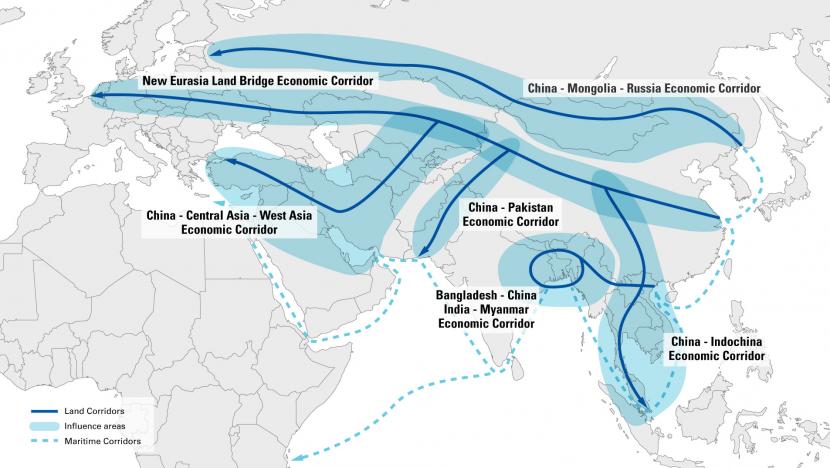
Energy Relationship
Despite frequent declarations of goodwill, Chinese-Russian energy relations since 1991 have been limited by mutual suspicions, pricing concerns, inadequate transportation infrastructure, and competition for influence in Eurasia. Russian leaders have expressed growing concerns regarding Chinese, Japanese and Korean settlement in the energy-rich but sparsely-populated Russian Far East as well as increased Chinese investment in and control of Russian energy ventures. China’s growing oil and gas partnerships with former Soviet Central Asian republics like Kazakhstan, Turkmenistan, and Tajikistan have also been a source of conflict, as Chinese policy makers act warily in this region given Moscow’s traditional dominant regional influence.
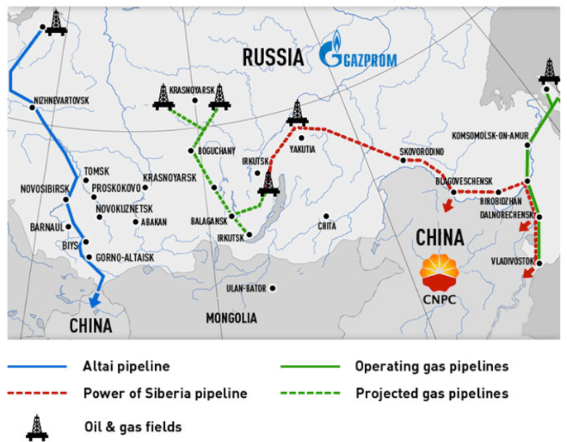
China’s Upper hand in Trade With Russia
In 2019 bilateral trade nearly hit $110 billion, and Putin and Xi announced a new goal of $200 billion in trade by 2024. Truth is that the European Union as a whole remains Russia’s largest partner with $260 billion trade, more than twice China’s trade with Russia. China became important to Russia accounting for 15.5 percent of its total trade in 2018. On the other hand Russia only accounted for 0.8 percent of China’s total trade in 2018. China thus commands much more influence. The only Russian exports are energy (70 percent), nuclear power systems, aircraft, and missile warning system. On all these counts the Chinese requirements are reducing. China has already overtaken Russia to become the world’s second-largest arms producer. Russia has accused China of illegally copying Russian military hardware. China is already in the process of jettisoning Russia on this count. Given China’s ambitions, and Russia’s need for better infrastructure, the BRI could be a choice for them. But chances are that the Chinese good would further flood the Russian markets. Western sanctions have also forced Russia to look toward China for investment opportunities. The Yamal LNG project, in the Russian arctic, would have been difficult, without Chinese support. China also used the Silk Road Fund to invest in Sibur, Russia’s largest petrochemical company. Russia, is also trying to attract investments from Japan, India, and Saudi Arabia as a counter-balance. In 2009, Russia and China announced over 200 joint projects. Little has moved on these. The flagship BRI project, the Moscow-Kazan high-speed railway, has been repeatedly delayed and, actually it pre-dates the BRI’s announcement. In March, Russian officials announced the project would be “postponed.” due excessive cost. In their desire to reduce their dependence on Western financial systems, they began using their own currencies for bilateral trade in 2010, but private companies and households in Russia prefer the dollar. China’s Yuan is still used only in less than two percent of payments globally.

Huawei and Russia
Russia’s decision to use Huawei equipment in its 5G trials was announced with fanfare and the deal signed during Xi’s visit to Moscow in 2019. Ground reality is that Russia is still considering other options for its 5G network and has several issues to resolve, including spectrum allocation. It may benefit from hedging and using a combination of different suppliers.
Military and Defence Production Relations
After the EU arms embargo on China imposed as a consequence of the Tiananmen Square protests of 1989, China became a reliable client for Russian military exports, making up 25–50% of all foreign military sales. In 1993, Russia and China signed a five-year defence cooperation agreement. In 1994 they signed a border security agreement. In 1999, China discussed expanding military ties with Israel. They discussed the one-billion dollar Israeli-Russian sale of AEW&C jointly produced by Russia and Israel. In 2004, the Russian Foreign Ministry blocked both the sale of the Su-35 and Tupolev Tu-22M bombers to China over concerns about the arrangements for Chinese production of the Sukhoi Su-27SK (known as the Shenyang J-11). Originally, the licensing agreement required that engines and avionics be sourced by Russian suppliers, however by 2004 these components had been reveres-engineered and were being produced domestically by China.

Currently, China focuses on domestic weapon designs and manufacturing, while still importing certain military products from Russia such as jet engines. China decided to become independent in its defense sector and become competitive in global arms markets; its defense sector is rapidly developing and maturing. Gaps in certain capability remain – most notably in the development of some sophisticated electronic systems and sufficiently reliable and powerful propulsion systems, but China’s defense industry is now producing warships and submarines, land systems and aircraft that provide the Chinese armed forces with a capability edge over most military operating in the Asia-Pacific. China procures from Russia and, until local industry eventually bridges the gap, it hopes that quantity will overcome quality. China’s 2015 Defense White Paper called for “independent innovation” and the “sustainable development” of advanced weaponry and equipment. In December 2019, Russia accused China of intellectual property theft of a range of military technologies. In June 2020, Russia charged one of its Arctic scientists of passing sensitive information to China.
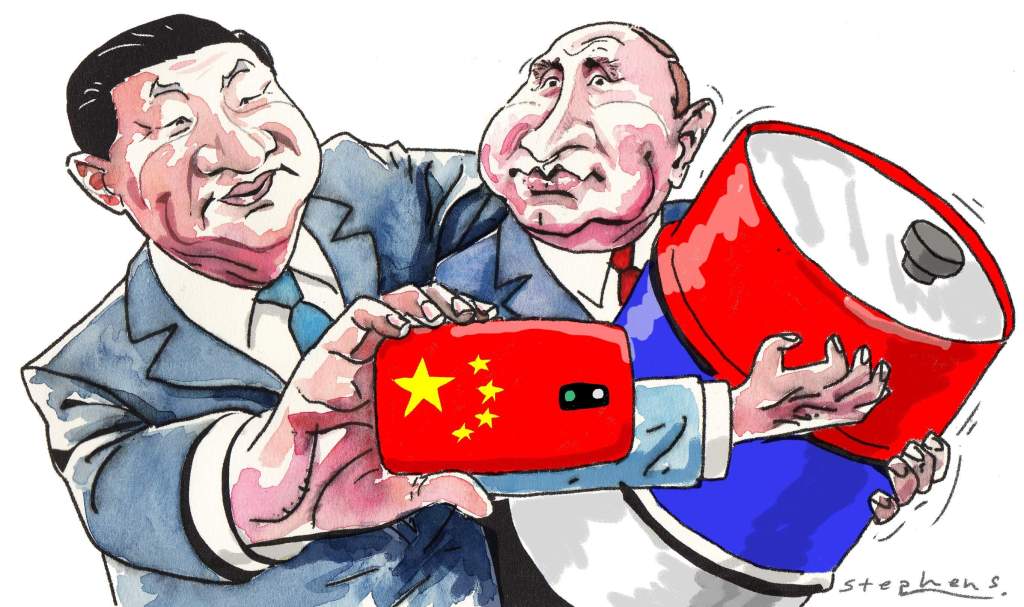
Perceptions by Local Populations
Since the Sino-Soviet border opened in 1988, Russian officials and media have warned about “Sinification” of the Russian Far East. In recent years, such warnings have reduced due concerted efforts to promote relations. Since 1995, Russians have consistently held positive views of China. In 2019, more than two million Chinese tourists visited Russia, and spent over $1 billion. Russia’s weak currency has helped attract Chinese tourists. Chinese tourists account for nearly 30 percent of Russia’s tourism. According to a 2019 survey by the Pew Research Center, 71% of Russians have a favorable view of China, with 18% expressing an unfavorable view. Similarly, a YouGov survey found that 71% of the Chinese think Russia has a positive effect on world affairs, while 15% view it negatively.
To Summarise
China and Russia have been carrying out strategic coordination, especially when it comes to USA. But Russia is conscious that in the long run, China would leave it high and dry. Beijing and Moscow have refused the US demand for China to participate in US-Russia nuclear disarmament negotiations. Chinese are worried that under the context of the deterioration of China-US relations, Russia will be drawn by the US to its side. International relations are complicated. The relationship between great powers cannot be generalized with simple values and ideologies. Currently USA has launched various sanctions against both China and Russia. China is also under attack for Covid-19. The US wants a uni-polar world and multi-polar Asia. China wants a uni-polar Asia and Multi-polar world. Much that Russia always wanted to be part of the West, has been pushed into the Chinese corner for now.

Russia is also conscious that the oil as a source of energy is fast losing significance and in the long run would lose huge revenues and export dependence. A CSIS report dated July 15, 2020, “China and Russia: Economic Unequals“, authored by Jonathan E. Hillman, director of the Reconnecting Asia Project at the Center for Strategic and International Studies in Washington, D.C., explains how Xi Jinping and Vladimir Putin are attempting to put economics at the center of their strategic partnership. Xi’s Belt and Road Initiative (BRI) has unleashed Chinese companies to build roads, railways, fiber-optic cables, and other hard infrastructure across the Eurasian supercontinent and beyond. Putin’s Eurasian Economic Union (EAEU) harmonizes customs processes to create a single market among Russia, Armenia, Belarus, Kazakhstan, and Kyrgyzstan. But already there are many question-marks on BRI success and who really will gain. Natural resources is the only place where Chinese and Russian interests most strongly overlap. Investment is constrained by corruption and poor infrastructure in Russia. People-to-people ties may have improved but mistrust remains. If China and Russia’s economic connections strengthen, their relationship will become even more unequal. Russia will in effect become a junior partner after having been a super-power and having groomed Chinese communism and defence industry. China’s sheer mass, proximity, desire to dominate Russia and Central Asia, and deep-rooted history and willingness to economically coerce others could eventually compel Russia to look again to the West. A long history of competition and mistrust makes the recent warming in China-Russia relations all the more complex. Russia could decide to keep cross-border transport connections weak as a hedge against China’s growing capabilities.
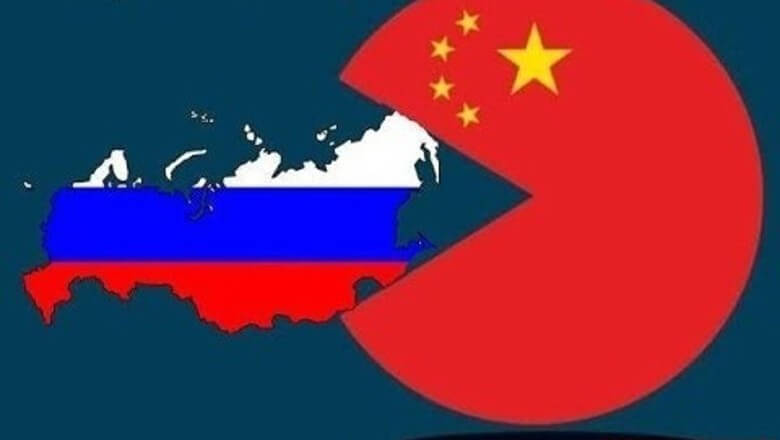
Many factors clearly reveal a partnership of unequal’s that is likely to become more one-sided in the future. China is clearly pulling ahead in every dimension. China currently needs Russian help, to expand westward. Yet Russia is best positioned to spoil China’s ambitious forays. Currently the West has forced Russia into Chinese arms. there is clear uncertainty ahead. Both countries currently have authoritarian leaders. Both still have at least a decade of power ahead. The possibility that Russia could lean again toward the West always remains high, especially if ambitious China decides to encroach into Russia’s far-east. West has a lot to offer to wean away Russia. It will be in India’s long term interest that Russia moves away from China and should take all actions to achieve the same.
Picture Credit: rg.ru

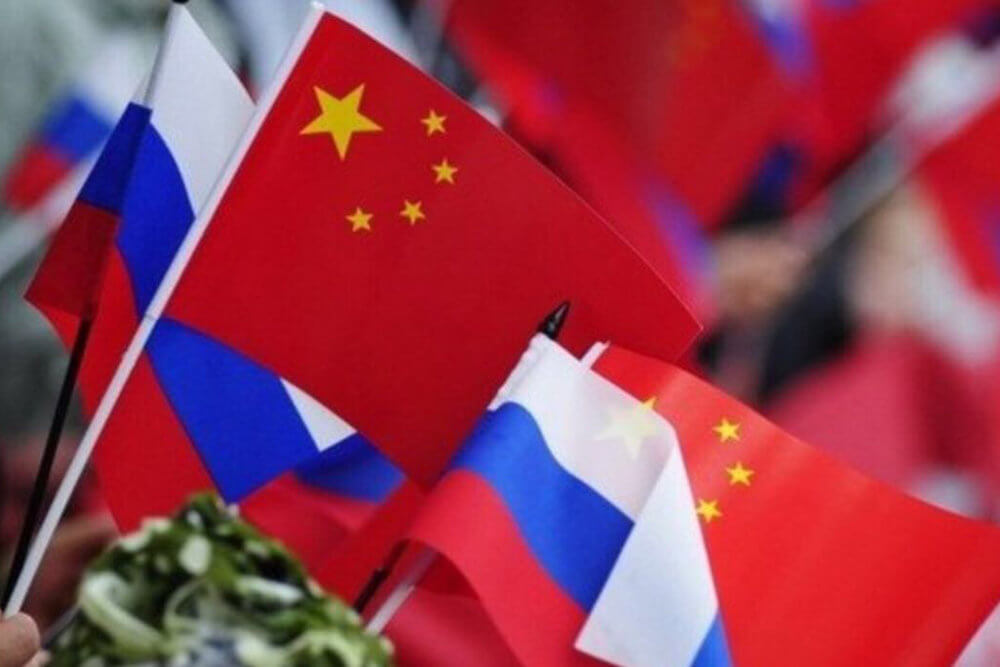
Nice work Anil …do write a bit more about IAF vs PLAAF in the ongoing stand off .. I think large sections of Indians , including sadly our colleagues from sister services are ill informed about our air power where withal in the hills .Best
Murli
LikeLike
Thanks Murli will do. Interestingly I am currently writing a book on China’s Aerospace power and implications for India. Will write soon on 5he website
LikeLike